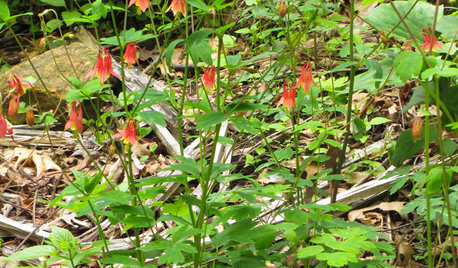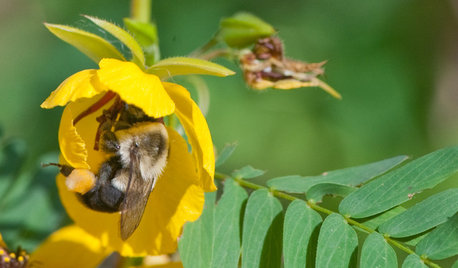Repopulating new garden with worms?
lovestogarden
12 years ago
Related Stories

GARDENING GUIDESHouzz TV: Make a Worm Bin for Rich Soil and Happy Plants
A worm-powered compost bin that can fit under a sink turns food scraps into a powerful amendment for your garden. Here’s how to make one
Full Story
WINTER GARDENING10 Native Wildflowers to Beautify Your Winter Garden
They stand strong in wind, feed wildlife and are easy to grow. But you may want to add these plants for their looks alone
Full Story
FLOWERS AND PLANTSRoll Out the Welcome Mat for Hummingbirds With Red Columbine
Grow Aquilegia canadensis in eastern perennial gardens or informal woodland plantings for its delicate foliage and uncommon red flowers
Full Story
GARDENING GUIDESGreat Design Plant: Chamaecrista Fasciculata Brightens City Boulevards
Plant partridge pea in eastern U.S. gardens for its bright yellow flowers, lacy foliage and drought tolerance
Full Story
LANDSCAPE DESIGNGreat Design Plant: Retreat to the Shade of Hardy Catalpa
Big foliage and a towering height provide a shady respite in summer, but that's not all hardy catalpa offers dedicated gardeners
Full Story
GARDENING FOR BUTTERFLIESBe a Butterfly Savior — Garden for the Monarchs
Keep hope, beauty and kindness alive in the landscape by providing a refuge for these threatened enchanters
Full Story
MOST POPULARHow to Start a Cool-Season Vegetable Garden
Late summer and late winter are good times to plan and plant cool-season crops like salad greens, spinach, beets, carrots and peas
Full Story
SPRING GARDENINGHow to Grow a Rose Garden in Pots
Everything can come up roses, even without a plot of soil in sight. This step-by-step guide to growing roses in containers shows you how
Full Story
GARDENING GUIDESGet the Dirt on Your Garden’s Soil
Understand how your soil supports your plants so you can ensure your garden’s success
Full Story
EDIBLE GARDENSHow to Grow Your Own Sweet Summer Crops
This guide will help any gardener get started on growing the freshest warm-season veggies and berries for summer
Full StoryMore Discussions






Kimmsr
jean001a
Related Professionals
Ballenger Creek Landscape Architects & Landscape Designers · Fort Lee Landscape Architects & Landscape Designers · Kyle Landscape Architects & Landscape Designers · Manhattan Beach Landscape Architects & Landscape Designers · Piqua Landscape Architects & Landscape Designers · Sahuarita Landscape Architects & Landscape Designers · Chesapeake Ranch Estates Landscape Contractors · Framingham Landscape Contractors · Hoffman Estates Landscape Contractors · Northport Landscape Contractors · Austin Decks, Patios & Outdoor Enclosures · Cincinnati Decks, Patios & Outdoor Enclosures · Dedham Decks, Patios & Outdoor Enclosures · Meridian Decks, Patios & Outdoor Enclosures · West Bend Decks, Patios & Outdoor Enclosurestoxcrusadr
yolos - 8a Ga. Brooks
lovestogardenOriginal Author
jean001a
JamesMarconnet
Kimmsr
lovestogardenOriginal Author
phytolacca
oliveoyl3
Kimmsr
lovestogardenOriginal Author
lori_ny
flora_uk
bob64
yolos - 8a Ga. Brooks
Kimmsr
borderbarb
yolos - 8a Ga. Brooks